Related Research Articles

The Distinguished Service Order (DSO) is a military decoration of the United Kingdom, as well as formerly of other parts of the Commonwealth, awarded for operational gallantry for highly successful command and leadership during active operations, typically in actual combat. Since 1993 it has been awarded specifically for "highly successful command and leadership during active operations", with all ranks being eligible. It is a level 2A decoration (order) in the British system of military decorations.
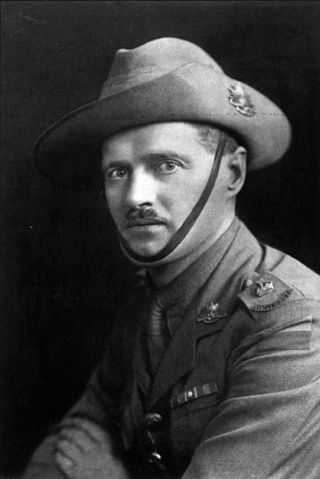
Henry William Murray, was an Australian grazier, soldier, and a recipient of the Victoria Cross, the highest decoration for gallantry "in the face of the enemy" that can be awarded to members of the British and Commonwealth armed forces. Decorated several times throughout his service in the First World War, Murray rose from the rank of private to lieutenant colonel in three and a half years. He is often described as the most highly decorated infantry soldier of the British Empire during the First World War.

General Sir Phillip Harvey Bennett, was a senior officer of the Australian Army who served as Chief of the Australian Defence Force from 1984 to 1987, and later as Governor of Tasmania from 1987 to 1995.

Hector Macdonald Laws Waller, was a senior officer in the Royal Australian Navy (RAN). His career spanned almost thirty years, including service in both world wars. At the helm of the flotilla leader HMAS Stuart in the Mediterranean from 1939 to 1941, he won recognition as a skilful ship's captain and flotilla commander. He then transferred to the South West Pacific as captain of the light cruiser HMAS Perth, and went down with his ship during the Battle of Sunda Strait in early 1942.

Major General Arthur Samuel "Tubby" Allen, was an Australian Army officer and accountant. During the Second World War he reached the rank of major general and commanded Allied forces in the Syria–Lebanon and New Guinea campaigns. Allen was frequently referred to during the Second World War by the nickname "Tubby"; an indication of his stocky build and the affection with which he was regarded by both soldiers and the Australian public.
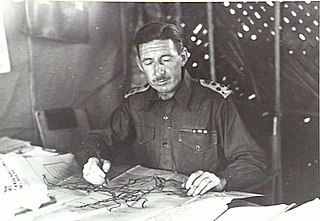
Major General Heathcote Howard Hammer, was a senior officer in the Australian Army, seeing service during the Second World War. After working as a traveling salesman he joined the Militia, Australia's part-time military force, in 1923, starting out as an enlisted soldier before being commissioned as an officer. By 1939, having served with several infantry units, he had reached the rank of major. Following the outbreak of the Second World War, Hammer volunteered for overseas service and fought in Greece, North Africa, New Guinea and Bougainville. He remained in the military after the war, rising to command at divisional level before retiring in 1959. He died in 1961 at the age of 56.
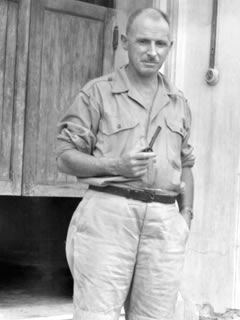
Sir Albert Ernest Coates OBE, FRCS (1895–1977) was an Australian surgeon and soldier. He served as a medical orderly in World War I serving on Gallipoli, and as a senior surgeon for the Australian Army Medical Corps in World War II in Malaya. He was captured by the Japanese and during his time as a POW, worked as a surgeon for the many Allied POWs working to build the Burma-Thailand Railway.
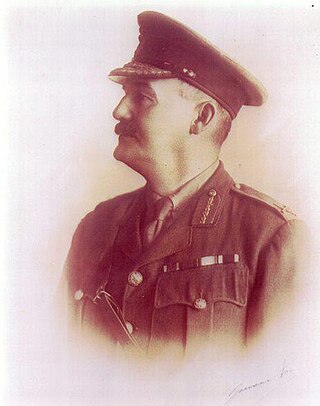
Brigadier General John Baldwin Hoystead Meredith, was an Australian physician and a senior officer in the Australian Imperial Force during the First World War.

General Sir Francis George Hassett, was an Australian general who rose to the position of Chief of the Defence Force Staff, the professional head of the Australian Defence Force, serving in this capacity from November 1975 until April 1977. Hassett joined the Australian Army in 1935 upon gaining entrance into the Royal Military College, Duntroon. Serving with distinction in the early stages of the Second World War, he was promoted to lieutenant colonel in 1942 at the age of 23, and posted as a staff officer for the remainder of the war.

Major General Rupert Major Downes, was an Australian soldier, surgeon and historian.

Sir Norman McAlister Gregg, was an Australian ophthalmologist, who discovered that rubella suffered by a pregnant woman could cause birth defects in her child.

Major General Sir Samuel Roy Burston, was an Australian soldier, physician, and horse racing identity.

Lieutenant General Edward Kenneth Smart, was a career officer in the Australian Army, and subsequently a diplomat. He married twice and his second wife was the Canadian diplomat Margaret Gordon.

Major General Paul Alfred Cullen, was a senior officer in the Australian Army. He joined the Militia in 1927 and saw active service throughout the Second World War, distinguishing himself as a fighting battalion commander on the Kokoda Track. Post war, he continued to serve in the Citizen Military Forces (CMF) and rose to the rank of major general as the CMF Member of the Military Board.

Sir Denis John Wolko Browne was the first British surgeon to devote his practice entirely to the care of children. A native of Australia, he served in the Royal Australian Army Medical Corps in World War I before moving to England and joining the staff of the Hospital for Sick Children at Great Ormond Street. An amateur tennis player in the 1920s, he made four appearances at Wimbledon.
Major General John Leslie Hardie, was an Australian general who served during First and Second World Wars. As a brigade major, Hardie earned the Distinguished Service Order and was later appointed an Officer of the Order of the British Empire for his services as a deputy assistant adjutant general.

Major General John Austin Chapman, was a professional soldier in the Australian Army. Joining the army in 1913, he served as a junior officer during the First World War and saw action on the Western Front. After the war he was appointed to a number of staff and teaching positions prior to the outbreak of the Second World War. Appointed chief of staff, 7th Division, he served during the Syrian Campaign in 1941 before taking up important staff positions in Australia. He retired from the army in 1953 after 41 years of service and died in Sydney in 1963 at the age of 67.
Douglas Squire Irving Burrows CBE (Civil) MBE (Military) was an Australian stock broker, businessman and philanthropist who from 1970 until his death was President of the Board Royal Alexandra Hospital for Children. With Lorimer Dods and John Fulton he co-founded the Children's Medical Research Foundation of which from 1970 he became the Chairman of the Management Committee.
Lieutenant Colonel Roy Morell DSO, OBE was an Australian wool broker, grazier and stockbroker who volunteered for war service during World War I and World War II.
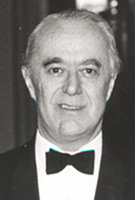
James Johnston Mason Brown OBE, FRCSEd was a Scottish paediatric surgeon. During World War II he served as a surgical specialist with the 8th Army in North Africa and Italy and was awarded the OBE for this service. As surgeon-in-chief at the Royal Hospital for Sick Children in Edinburgh, he edited the major textbook The Surgery of Childhood. He was the joint founder of the Scottish Surgical Paediatric Society and a founder member of the British Association of Paediatric Surgeons (BAPS), of which he became president. He was elected President of the Royal College of Surgeons of Edinburgh (RCSEd) in 1962 but died in office aged 56 years.
References
- ↑ "Obituary". Archived from the original on 20 August 2013. Retrieved 24 September 2012.
- ↑ It's an Honour - Distinguished Service Order
- ↑ "No. 35745". The London Gazette (Supplement). 13 October 1942. p. 4479.
- ↑ "World War II Nominal Roll". Archived from the original on 4 March 2016. Retrieved 8 November 2015.
- ↑ It's an Honour - Officer of the Order of Australia